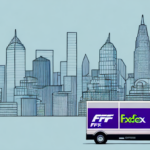Definitions and Key Differences Between Delivery and Shipping
When sending items from one location to another, delivery and shipping are two terms that are often used interchangeably. However, they entail distinct processes and are suited for different needs.
What is Delivery?
Delivery refers to the transportation of goods over short distances, typically within the same city or region. It usually involves a single carrier and is designed for quick turnaround times. Examples include delivering groceries from a local store or pizzas from a nearby restaurant.
What is Shipping?
Shipping involves moving goods over longer distances, which may span cities, states, or even countries. It requires more complex logistics, often involving multiple carriers and modes of transportation, such as trucks, planes, and ships. A common example is shipping electronics from China to the United States.
Key Differences
- Distance: Delivery is local, while shipping covers long distances.
- Time Frame: Deliveries are usually completed within days, whereas shipping can take weeks.
- Logistics: Delivery involves simpler logistics with fewer parties, while shipping requires coordination among multiple carriers and regulatory bodies.
Logistics and Technology in Delivery and Shipping
Effective logistics and advanced technology are crucial for the efficiency and reliability of both delivery and shipping services.
Logistics of Delivery
Delivery logistics are typically straightforward, focusing on factors such as the distance between sender and recipient, the size and weight of the package, and the mode of transport—be it bikes, cars, or vans.
Logistics of Shipping
Shipping logistics are more complex, especially for international shipments. They involve navigating customs regulations, international tariffs, and coordinating multiple transportation modes. For instance, shipping a large furniture item from the UK to India would require coordination between trucks, ships, and possibly airplanes.
Role of Technology
Technology has revolutionized both delivery and shipping by enhancing efficiency and providing real-time tracking capabilities. Mobile applications like Uber Eats enable real-time order tracking, while GPS and IoT technologies allow for precise monitoring of shipments. Additionally, innovations like drones and autonomous vehicles are being tested to further streamline these processes.
Cost and Factors Influencing Delivery vs Shipping Choices
The costs associated with delivery and shipping vary significantly based on several factors.
Cost Comparison
Delivery is generally less expensive due to shorter distances and fewer logistical complexities. Costs are primarily influenced by distance, package weight, and the mode of transport.
Shipping costs are more variable, influenced by distance, customs fees, handling charges, and carrier rates. International shipping often incurs higher costs due to additional regulatory requirements.
Factors to Consider
- Distance: Local vs. international.
- Package Size and Weight: Heavier and larger packages cost more to ship.
- Urgency: Faster delivery options often come at a premium.
- Type of Goods: Perishable or sensitive items may require specialized handling.
- Carrier Reliability: Reputable carriers may offer better rates and services.
Benefits and Common Concerns of Delivery and Shipping
Choosing between delivery and shipping depends on weighing the benefits against potential concerns.
Benefits
- Delivery: Faster turnaround, lower costs for local shipments, and convenient real-time tracking.
- Shipping: Economical for long-distance and bulk shipments, with extensive carrier networks.
Common Concerns
- Security: Ensuring packages are not lost or damaged.
- Reliability: Dependable delivery schedules and accurate tracking.
- Speed: Balancing cost with desired delivery times.
Using reputable carriers like FedEx, DHL, and UPS can mitigate many of these concerns by offering insurance and reliable services.
Best Practices and Choosing the Right Carrier
Implementing best practices ensures a smooth delivery or shipping experience.
Best Practices
- Proper Documentation: Ensure all shipping documents are complete and accurate.
- Reputable Carrier: Choose carriers with good track records and customer support.
- Packaging: Use appropriate materials to protect items during transit.
- Insurance: Insure valuable or fragile items against loss or damage.
- Tracking: Regularly monitor the status of your shipment.
Choosing the Right Carrier
When selecting a carrier, consider factors such as reputation, cost, tracking capabilities, insurance options, and customer support. Tools like ShipGooder and Shipment O can help compare different carriers to find the best fit for your needs.
Future Trends and Managing International Shipments
The delivery and shipping industries are evolving with emerging trends and the complexities of international logistics.
Future Trends
- Automation and AI: Autonomous vehicles and drones are set to revolutionize delivery methods.
- Eco-Friendly Practices: Increased use of electric vehicles and sustainable packaging.
- Advanced Connectivity: 5G and IoT will enhance tracking and logistics management.
- Blockchain Technology: Improving transparency and security in the supply chain.
Managing International Shipments
International shipping requires meticulous planning and adherence to global regulations. Key considerations include:
- Customs Regulations: Understanding the specific import/export laws of the destination country.
- Documentation: Accurate completion of forms like commercial invoices and bills of lading.
- Carrier Selection: Choosing carriers experienced in international logistics.
- Prohibited Items: Ensuring that no forbidden items are included in the shipment.
Tracking is essential to manage potential delays caused by customs inspections or regulatory issues. Employing reliable carriers and staying informed about international trade policies can facilitate smoother shipments.
Customer Rights and Impact of COVID-19 on the Industry
Understanding your rights and the recent impacts of global events is crucial for a satisfactory shipping or delivery experience.
Customer Rights
Customers are entitled to certain protections, including:
- Insurance Coverage: Protection against loss or damage.
- Delivery Guarantees: Assurance of delivery within promised timeframes.
- Transparent Pricing: Clear information on costs and any additional fees.
- Dispute Resolution: Mechanisms to address any issues or complaints.
It's important to read the carrier’s terms and conditions and understand the scope of their services and protections.
Impact of COVID-19
The COVID-19 pandemic significantly disrupted the delivery and shipping industries, leading to:
- Increased Demand: A surge in e-commerce and home deliveries.
- Supply Chain Disruptions: Delays due to factory closures and reduced transportation capacity.
- Safety Protocols: Enhanced health and safety measures for workers.
- Regulatory Changes: Adaptation to new international shipping regulations.
Many carriers have adapted by expanding their services, increasing workforce, and investing in technology to handle the increased demand and logistical challenges.
Conclusion
While delivery and shipping may appear similar, they serve different purposes based on distance, package size, urgency, and logistics. By understanding the key differences, evaluating costs, considering factors like reliability and speed, and adopting best practices, you can choose the most suitable method for your needs. Additionally, staying informed about future trends and international shipping requirements will help navigate the evolving landscape of the delivery and shipping industry. Leveraging technology and reputable carriers ensures a reliable and efficient experience, enhancing overall satisfaction in your shipping or delivery endeavors.




















